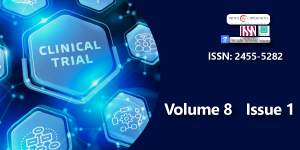The glycocalyx may play an important role in Preventing Sepsis Campaign in China (PSCC)
Main Article Content
Abstract
Sepsis is a common clinical emergency and critical illness, whose prevention and treatment are mainly to protect organ functions. Glycocalyx is a polysaccharide-protein composite structure on the surface of endothelial cells, which has the functions of protecting cell barriers and maintaining organ perfusion. It may protect the organ function, and prevent the infected patients from progressing to sepsis by monitoring of glycocalyx in the serum. This article mainly summarized the cause of PSCC and the possible role of glycocalyx in PSCC to provide reference for clinical intervening.
Downloads
Article Details
Copyright (c) 2021 Chai Y, et al.

This work is licensed under a Creative Commons Attribution 4.0 International License.
Singer M, Deutschman CS, Seymour CW, Shankar-Hari M, Annane D, et al. (2016) The third international consensus definitions for sepsis and septic shock (sepsis-3). JAMA 315: 775-787. Link: https://bit.ly/3n56Q7D
Gaieski DF, Edwards JM, Kallan MJ, Carr BG (2013) Benchmarking the incidence and mortality of severe sepsis in the united states. Crit Care Med 41: 1167-1174. Link: https://bit.ly/2QJu7Qa
Martin GS, Mannino DM, Eaton S, Moss M (2003) The epidemiology of sepsis in the united states from 1979 through 2000. N Engl J Med 348: 1546-1554. Link: https://bit.ly/3ni3myR
Mouncey PR, Osborn TM, Power GS, Harrison DA, Sadique MZ, et al. (2015) Trial of early, goal-directed resuscitation for septic shock. N Engl J Med 372: 1301-1311. Link: https://bit.ly/3gvW3Sy
Weng L, Zeng XY, Yin P, Wang LJ, Wang CY, et al. (2018) Sepsis-related mortality in china: a descriptive analysis. Intensive Care Med 44: 1071-1080. Link: https://bit.ly/32vTVSN
Rivers E, Nguyen B, Havstad S, Ressler J, Muzzin A, et al. (2001) Early goal-directed therapy in the treatment of severe sepsis and septic shock. N Engl J Med 345: 1368-1377. Link: https://bit.ly/2QnWjbw
Investigators P, Yealy DM, Kellum JA, Huang DT, Barnato AE, et al. (2014) A randomized trial of protocol-based care for early septic shock. N Engl J Med 370: 1683-1693. Link: https://bit.ly/3aoGM24
Peake SL, Delaney A, Bailey M, Bellomo R, Cameron PA, et al. (2014) Goal-directed resuscitation for patients with early septic shock. N Engl J Med 371: 1496-1506. Link: https://bit.ly/3n8Afhm
Mentzoni I, Bogstrand ST, Faiz KW (2019) Emergency department crowding and length of stay before and after an increased catchment area. BMC Health Serv Res 19: 506. Link: https://bit.ly/2RNCyKV
Hariri G, Joffre J, Leblanc G, Bonsey M, Lavillegrand JR, et al. (2019) Narrative review: clinical assessment of peripheral tissue perfusion in septic shock. Ann Intensive Care 9: 37. Link: https://bit.ly/2RH5gwX
Colbert JF, Schmidt EP (2016) Endothelial and microcirculatory function and dysfunction in sepsis. Clin Chest Med 37: 263-275. Link: https://bit.ly/3sGOT0e
Siddall E, Khatri M, Radhakrishnan J (2017) Capillary leak syndrome: etiologies, pathophysiology, and management. Kidney Int 92: 37-46. Link: https://bit.ly/3xcu1Bo
Uchimido R, Schmidt EP, Shapiro NI (2019) The glycocalyx: a novel diagnostic and therapeutic target in sepsis. Critical Care 23: 16. Link: https://bit.ly/3xcupzQ
Yang Y, Schmidt EP (2013) The endothelial glycocalyx: an important regulator of the pulmonary vascular barrier. Tissue Barrier 1: e23494 Link: https://bit.ly/32wg7fx
Ikeda M, Matsumoto H, Ogura H, Hirose T, Shimizu K, et al. (2017) Circulating syndecan-1 predicts the development of disseminated intravascular coagulation in patients with sepsis. J Crit Care 43: 48-53. Link: https://bit.ly/3n4ZjFX
Burke-Gaffney A, Evans TW (2012) Lest we forget the endothelial glycocalyx in sepsis. Crit Care 16: 121. Link: https://bit.ly/3tF5HWD
Smart L, Macdonald SPJ, Burrows S, Bosio E, Arendts G, et al. (2017) Endothelial glycocalyx biomarkers increase in patients with infection during emergency department treatment. J Crit Care 304-309. Link: https://bit.ly/3tJdJ12

